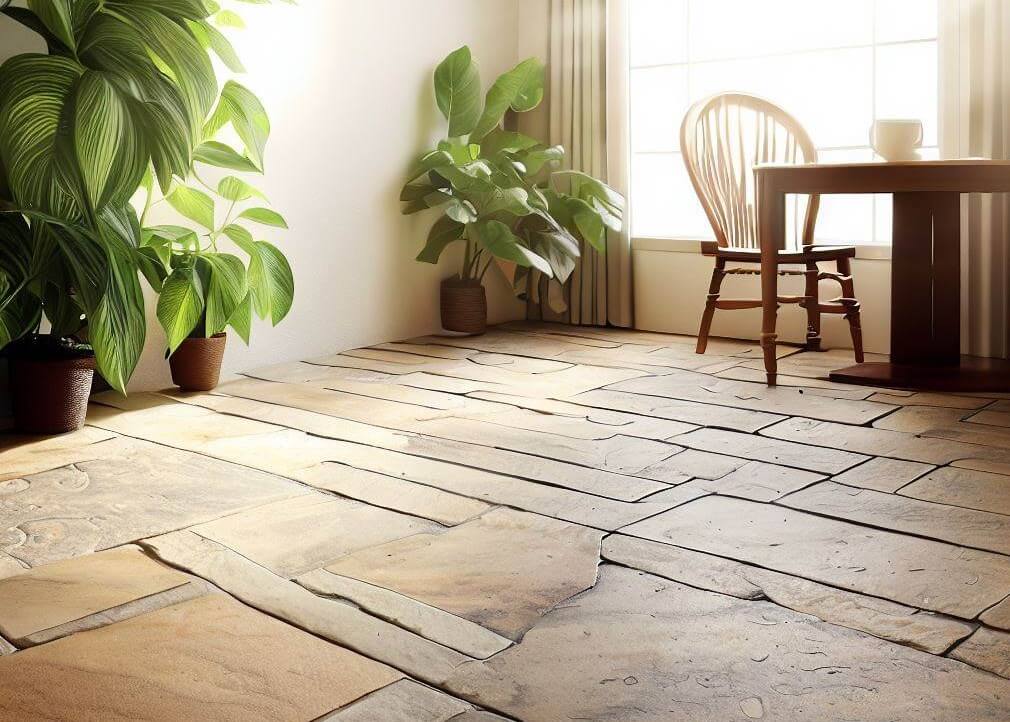Flagstone Flooring
The floor whose surface is covered by a square or rectangular flagstone slab is called flagstone flooring. Flagstone is another form of sandstone. 20 mm to 40 mm uniformly thick sandstone slab is known as flagstone. It is mainly used for flooring, roofing, and walkways.

Read Also: Different Types of Flooring
Method of Flagstone Flooring
For the construction of flagstone flooring, first of all, a layer of earth is filled uniformly in the flooring area. The layer is rammed hard after mixing water with it.
If the soil quality is not too good, a layer of rubble boulders or broken brick-bats around 250 mm thick is laid on it. This layer is then rammed so that the broken bricks are fully embedded in the flooring soil, and a hard bed is obtained.
A layer of lime concrete, 100 mm to 150 mm thick, is then spread over the hard bed. Again this layer is rammed to get a consolidated layer and left to set for 2 to 3 days.

After this process, a layer of lime mortar, 20 to 25 mm thick is spread and flagstones are fitted in it. Once stone slabs are properly set in the mortar layer, the mortar that has come out through joints is raked off for a depth of about 20 mm and flush-pointed with 1:3 cement mortar.
The standard dimensions of stone blocks are usually 300 mm x 300 mm, 450 mm x 450 mm, 600 mm x 600 mm, and 450 mm x 600 mm. The stones used should be enough hard, durable, and of fine quality.
The stones are dressed on all the edges so that joints are kept thin, to give them a better look. These types of floors are used in such a place(like – Stores, Godowns, sheds, etc.) where heavy load movement have to be handled.
Advantages of Flagstone Flooring
Following are the 4 advantages of flagstone flooring:
1. Flagstone flooring is very economical for the place where the stone is easily available.
2. Maintenance is easy and cheap.
3. It is hard, durable, and wear-resistant.
4. It can withstand wear during the movement of heavy loads.
Disadvantages of Flagstone Flooring
1. It is not a very fine and smooth type of floor.
2. It is not very impervious as water can percolate through damaged portions.
3. When iron-tired thellas move over the flagstone floor, it produces a lot of noise.
Read Also:
Composite Steel-Concrete Floor & Deck System